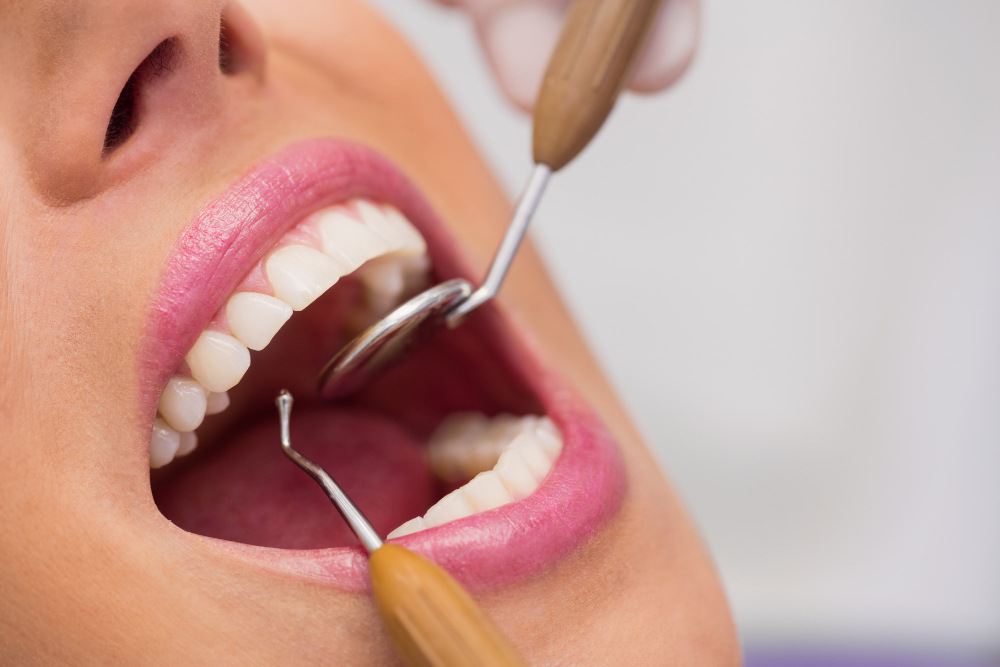
VISITING HOURS:
Week Days - 9 am to 8 pmSundays - Only Emergency Cases
How to Deal with Dental Plaque Formation?
Dental plaque formation is a very common phenomenon seen in both adults and children. Plaques can form in different multitudes, and there are many ways in which plaques can be removed from the mouth. Plaque formation causes different issues like bad breath, tooth decay, gum disease, and other oral health problems. Plaque removal can be done at home, and routine checkups with your dentist will help avoid plaque formation. Read the article below to understand how to deal with dental plaque formation.
What is a Plaque?
Plaque is a colorless, sticky film of bacteria that forms on the surface of the teeth. when saliva, fluids, and food particles come into contact with each other and create plaque. Plaque is made of bacteria and is produced between teeth and the gum line. Once the plaque layer is formed in the teeth, it allows microbes to stick to it. The plaque becomes visible over time with proper dental hygiene.
Why is Dental Plaque Bad for Your Health?
As said earlier, food particles, especially starch and carbohydrates mixed with plaque, cause erosion of the tooth enamel. When erosion happens, it will cause cavities over the teeth and can cause tooth sensitivity, pain, and eventually tooth loss. The entire foundation of the tooth structure may be affected in the long run.
Plaque can eventually cause bad breath, which can affect self-confidence and impact social life. The best way to remove plaque is through brushing and flossing. Plaques are usually removed through professional cleaning by the dentist. Small amounts of plaque can be removed at home, and only when it is long due and forms tartar, professional cleaning is required. Fluoride treatment right after plaque removal can help enhance the enamel of the tooth.
What Causes Plaque Buildup?
The most common reason for plaque buildup is not brushing the teeth regularly. If an average individual brushes twice a day but does not floss, it can also lead to the formation of plaque. Eating sugary and starchy foods throughout the day and right before bedtime can lead to plaque. If you are not drinking enough water, that can also be an initiation point for plaque formation. The issue of bad breath usually arises when there is a gum infection, which can cause bleeding, inflammation, and swelling. The bacteria that form in this condition can reach other parts of the body through the bloodstream.
Who is Likely to Have Dental Plaque?
A person who is normally subjected to dental plaque is as follows:
→If the person regularly consumes sugar and starchy foods.
→If the person doesn’t brush their teeth regularly and does not floss regularly.
→If they have dry mouth due to medications like antidepressants
→History of head or neck radiation.
→Smoking.
Read to know: How does Smoking Affect Your Teeth?
How is Plaque Diagnosed?
Plaque is diagnosed by inspecting your mouth and teeth regularly. When there is a fuzzy feeling over the teeth when you run your tongue over them, it means there is a formation of plaque. Also, the formation of a plaque that is not visible can be found under routine dental inspection. Plaque can also lead to the formation of cavities, which can be more evident in dental X-rays.
Different Ways to Prevent Plaque Buildup
There are different ways to ways to deal with dental plaque formation. The plaque, when not taken care of, forms tartar and then requires professional cleaning. Let us look into the different ways in which one can prevent the buildup of plaque:
Using the Correct Brushing Pattern
Simply brushing twice a day will not suffice to prevent the buildup of plaque. The right way to brush is to hold the hand at 45 degrees and brush for at least two to three minutes per brushing session. You should also make sure that, while brushing, all the spots in between the teeth are reached. The brushing has to be done in circular motions, brushing the front and back of the teeth to make sure there is no plaque formation.
Also Read: Ultimate Guide for Choosing the Right Toothpaste
Chewing Sugar-Free Gum After Meals
This is one of the important ways to deal with dental plaque formation. Chewing sugar-free gum is a good practice after meals. Chewing sugar-free gums for at least twenty minutes after eating food can help stimulate the flow of saliva, neutralize the acidic content in the mouth, and nudge out the food particles that are lodged between the teeth. It will also help prevent tooth decay, and scented gums can also help with bad breath in the mouth.
Regular Use of Antimicrobial Mouthwash
After brushing and flossing each day, the next step is to use mouthwash to clean the mouth again. It is an added prevention method to make sure that the particles that are stuck in areas where the brush cannot reach are removed. The gums’ health also helps in preventing gum diseases. It also helps in avoiding bad breath and retaining oral health in the best way possible.
Regular Consumption of Fruits and Vegetables
Regular consumption of fruits and vegetables is one of the ways to deal with dental plaque formation. Eating foods with high sugar content and foods with a high starch content like bread, sweets, cake, cookies, chocolate, etc. This contributes to the formation of saliva after mixing with it. But replacing such foods with good fruits and vegetables will help with dental health. Drinking water and eating fiber-rich foods also help stimulate the flow of saliva inside the mouth.
Taking the help of experienced dental professionals will help make sure that overall oral health is maintained. Periodic dental checkups and cleanings will help the mouth be devoid of bad breath and other issues like plaque formation and gum infections.
Read Similar: Why Good Nutrition is Necessary for Healthy Teeth?
OUR
TREATMENTS
TREATMENTS








